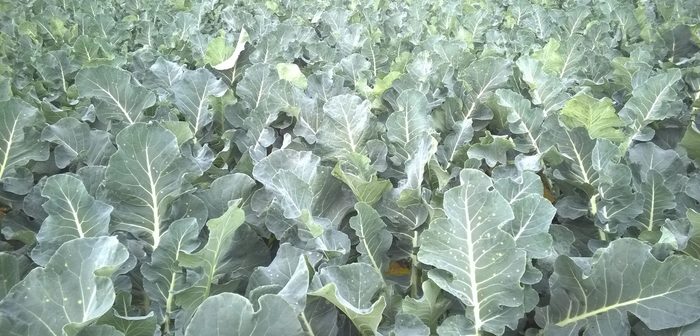Brassica growers know only too well that they must produce vegetables free from pests and disease for the demanding retail sector. They need to make sure that they grow great quality brassicas with good shelf appeal and with no visual blemishes. An integrated spray programme will have been planned and crops need to be monitored to show when the programme of fungicides should start. Already there are reports of Alternaria in spring greens and what develops over the next few months will largely depend on weather conditions and sources of inoculum.
Brassicas can suffer a number of diseases. The key ones are ring spot (Mycosphaerella brassicola), light leaf spot (Pyrenopeziza brassicae), white blister (Albugo candida), Botrytis, Dark leaf spot (Alternaria), Powdery mildew and Sclerotinia. All these diseases spoil the visual appearance of the crop as well as significantly eroding yield. “Light Leaf spot is the same pathogen as the one that attacks oilseed rape and has increased in vegetables as it is transmitted from very widespread rape stubbles and crop debris. Signum is effective on Light leaf spot and forms the basis of a brassica disease programme whatever the weather and disease spectrum you expect. In Brussels sprouts, light leaf spot affects both quality and appearance of the buttons and its presence can lead to crop rejection. But says Rob Storer of BASF, we may be in danger of overlooking other diseases of brassicas, just because we are so familiar with Light leaf Spot in rape.
Rob points out that the fungicide Signum (boscalid and pyraclostrobin) is a robust start to any fungicide programme in brassicas. “It controls a wide spectrum of diseases – with Sclerotinia, Alternaria and Powdery mildew plus useful control of ring spot and Light leaf spot- and it can be recommended in a wide range of vegetable crops including Brussels sprouts, cabbage, cauliflower and broccoli/calabrese on its label plus baby leaf production, spinach, chard, choi sum, kale, pak choi, swede, turnips and celeriac as EAMUs. “The greening effects from Signum mean that if the weather is dry the crop is less stressed,” reminds Rob Storer.
Signum is a protectant fungicide, and it should be applied at 1 kg/ha early in the programme before the first signs of disease. It should be followed by other fungicides with different modes of action 3 or 4 weeks later as part of a pro-active resistance strategy. In Brussels sprouts the first of the three fungicides is usually applied in July, the second around the end of August and the third Oct to December. Signum has a Harvest interval of 14 days and a maximum number of 3 kgs/ha can be made in brassicas.
It is worth reminding growers that Signum also has full label recommendations for carrots, combining peas, winter and spring field beans, vining peas, outdoor lettuce, protected lettuce, outdoor strawberries, protected strawberries and blackcurrants.




